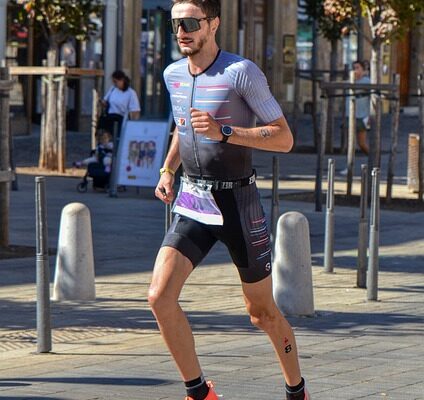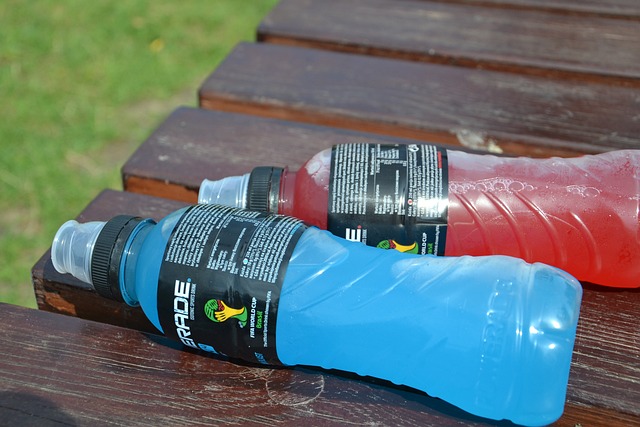Even the most experienced endurance athlete might get confused about what, when, and how much to eat and drink. The following principles will help you streamline your fueling (and refueling) plan.
Endurance athletes like marathon runners, long-distance cyclists, and swimmers have specific sports nutrition needs. A well-balanced diet is critical for peak performance and recovery if you normally exercise longer than 2 hours at a high level.
How Food Becomes Workout Energy
When creating your plan, it’s important to understand how the nutrients we eat can assist in feeding our muscles and keep us active for hours on end without becoming fatigued. These foods are divided into three categories: carbohydrates, fats, and protein.
Carbohydrates
Carbohydrates are the primary fuel for moderate to high-intensity exercise. These foods provide the body with the glucose it requires for long-term energy. Consuming them allows endurance athletes to continue without “bonking,” which occurs when your blood sugar goes too low, and you are unable to continue.

Despite this, research shows that most non-elite endurance athletes do not ingest enough carbs to support their rigorous training routine.
Fats
Fats can also offer energy, especially when the exercise is low-intensity and prolonged. As a result, this macronutrient is critical for supporting training sessions that emphasize endurance rather than speed.
Monounsaturated fats are the healthiest fats because they help improve the body’s HDL or “good” cholesterol, lowering the risk of stroke or heart attack. Increasing omega-3 fatty acid intake lowers inflammation and improves brain and nervous system function.
Protein
Proteins are generally used for muscle maintenance and repair. Whilst these meals are not commonly thought of as fuel for endurance training, research suggests that they are required in somewhat higher amounts when participating in this form of activity. Consider protein to be the fuel that your muscles require to keep going. Proteins also aid in muscle recovery following a strenuous training session or competitive event.
When Should You Consume Each Food Source?
Before delving into the optimum carbohydrate, fat, and protein sources for endurance athletes, it’s critical to understand when to ingest each of these types for maximum energy and fuel. This is divided into pre- and post-training advice, as well as refueling tips throughout an endurance training or event.
Pre-Training
Eating three to four hours before indulging in endurance training or activities provides the body with a full fuel tank. The greatest food sources for pre-training meal are complex carbohydrates.
During Training
Glycogen reserves are limited during Endurance Training or Events and are depleted quickly—within 90 minutes to two hours—during high-intensity exercise. Fatigue sets in if the athlete is not fully refreshed, and the athlete must slow down or risk “hitting the wall.”
As a result, it is critical to ingest carbs during long training sessions or endurance sports. Simple carbohydrates or carbs that the body can absorb fast are ideal for this purpose.
Post-Training
The body requires refueling after an endurance training session or event. Additional carbs can help with this, but protein is also crucial at this time, as it provides the nutrients to muscles, so they recover properly.
Good Endurance Foods
Each macronutrient category (carbohydrates, protein, and fat) contains foods with higher nutritional content, making them superior choices for fueling and recharging the body. Here are a few to think about.
Carbohydrates
Because a pre-training diet entails consuming complex carbs, healthier meals in this category include:
- Couscous
- Lentils with beans
- Rice (brown)
- Quinoa
- Yummy sweet potatoes
- Whole wheat Bread
- Whole Wheat Pasta
Athletes benefit from feeding their bodies during training sessions with easily digestible or “fast” carbohydrates in order to continue high-level exertion for extended periods of time. Some healthy mid-exercise replenishment choices to consider include:
- Chocolate Milk
- Carbohydrate-rich energy bar
- Apples and bananas are examples of fresh fruit.
- Juice from fruits
- Honey (a couple of tablespoons)
- Fruity skim and lactose-free yogurt
- Carbohydrate-fortified sports drink
Protein
Protein aids in the healing of the body, making it an excellent post-workout meal option. Cottage cheese is a healthier protein meal alternative.
- Eggs
- Yogurt from Greece
- Hummus
- Chicken or lean meat
- Seeds and nuts
Fat
This macronutrient category is a little problematic, especially since more than 70% of endurance athletes ingest more fat than their bodies require.
6 Nonetheless, the body requires some fat to function properly. Healthy fats are as follows:
- Avocados
- Eggs
- Dark chocolate
- Fish that is high in fat
- Nut butter and nuts
- Olives
- Extra virgin olive oil

How Much Should You Eat?
Just as knowing what to eat and when is crucial, endurance athletes benefit from knowing how much to consume. This guarantees that you get the proper number of nutrients without ingesting too many calories and maybe gaining weight.
Endurance athletes should consume the following nutrients:
Pre-training: 6-12 grams of carbs per kilogram of body weight consumed within 24 hours of the training or event, followed by 1-4 grams consumed within 4 hours of the training or event.
During-training: 60 grams of carbs every hour if the activity lasts more than 60 minutes; consume 60-70 grams of carbs per hour if the activity lasts more than 2.5 hours.
Post-workout: 1-1.2 grams of carbs per kilogram of your body weight during the first 3-5 hours after training or an event, with 0.3 grams of protein per kilogram of body weight.
One kilogram equals 2.2 pounds for calculating your body weight. A 150-pound person weighs around 68 kilos (150 divided by 2.2 equals 68).
Although there are no recommendations for fat consumption before, during, or after a workout or event, endurance athletes should strive to ingest 20% to 35% of their total calorie intake from sources of fat.
How to Hydrate Endurance Exercise
If you exercise for more than three or four hours at a time, you should be aware of your hydration requirements and drink water before, during, and after your workout.
During the activity, don’t rely on thirst to tell you when to drink. You’re already dehydrated by the time you feel thirsty. It is preferable to consume small amounts frequently rather than large amounts all at once.
Start weighing yourself before and after long training sessions to establish your unique hydration requirements and to learn how varied weather and training circumstances may affect you. You’ll also get a sense of how much water you need to drink throughout your daily workouts.
Monitoring your urine flow and color is another simple approach to measuring your post-workout hydration condition. A lot of light-colored, diluted pee indicates that you are well-hydrated. A tiny volume of dark-colored, highly concentrated urine may indicate dehydration and the need for extra fluids.
The following suggestions can assist you in meeting your hydration requirements when exercising:
Prior to exercise: 15 to 30 minutes before your workout, drink 7-12 ounces of fluid.
During Exercise: Drink 4-8 ounces every 15 – 20 minutes.
Post Exercise: Rehydrate by consuming around 24 ounces of water for every kilogram (2.2 pounds) lost during exercise.
Sodium, as well as electrolytes
During long endurance training and sports, you’ll most likely need to consume more electrolytes (sodium, potassium, magnesium) than you normally would. This promotes peak performance, both physically and emotionally.
Throughout the training or event, consuming an electrolyte-containing sports drink is a quick and easy solution. This can help lower the risk of hyponatremia, which is water intoxication caused by low sodium levels.
To Conclude
Every athlete will have different nutrition and replenishing requirements and preferences. You will discover the ideal technique increase endurarnce for you by trying several approaches.
Experiment with different foods and food combinations before, during, and after your workouts. Adjust the timing and amount of food you consume, and you will be able to establish your ideal refueling strategy over time.

